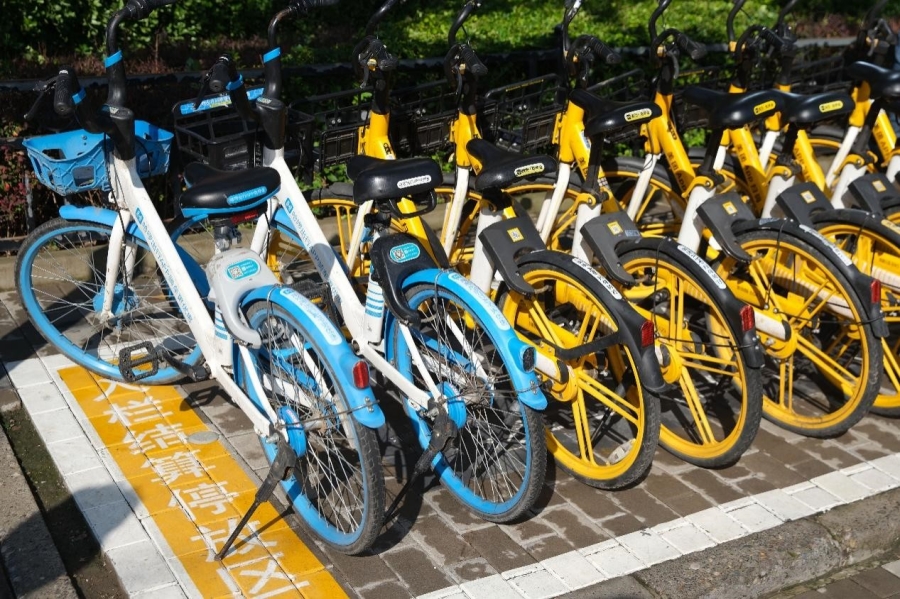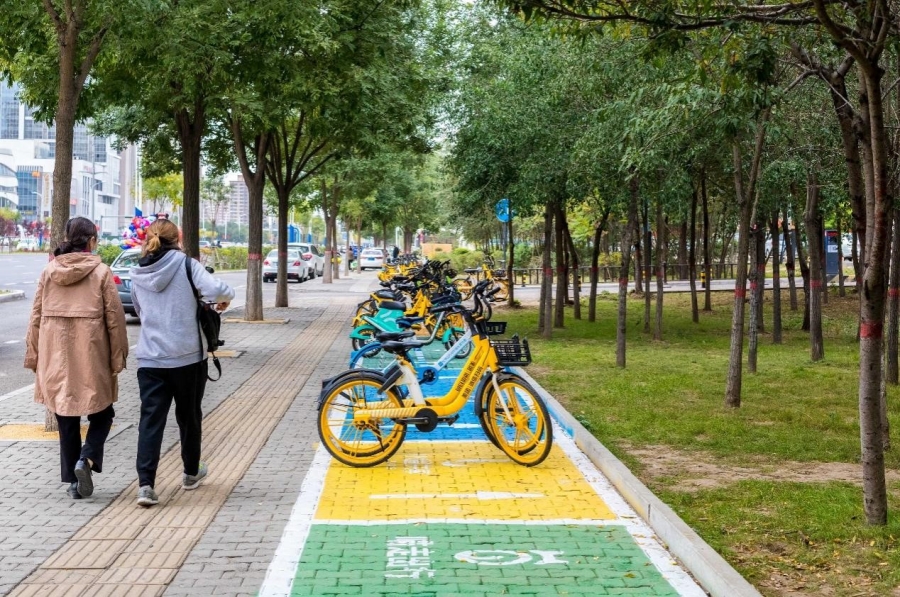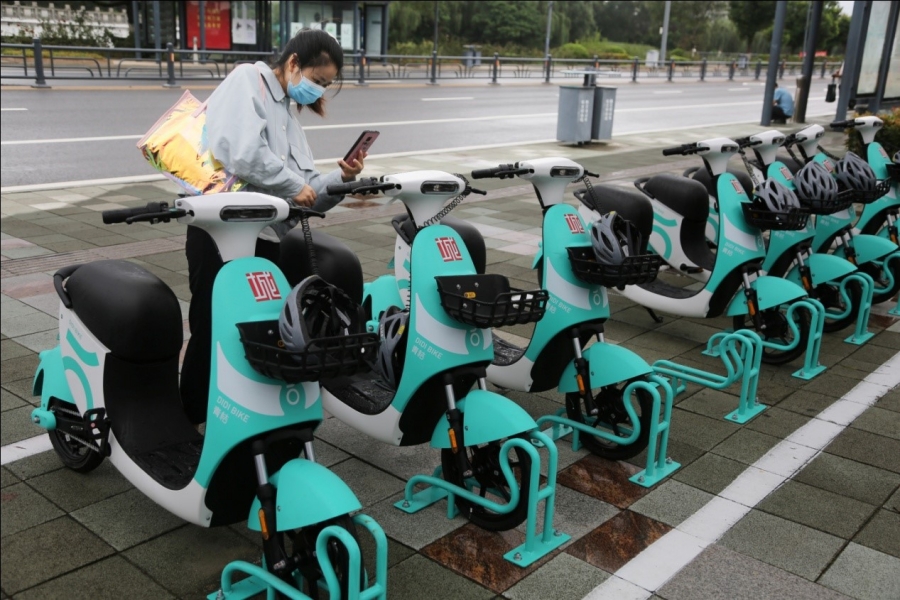Chinese cities improve order in transport system through innovative approaches
Many cities across China have adopted innovative approaches to ensure traffic and transport order, constantly improving urban governance.

Photo taken on Sept. 27, 2021 shows a designated parking zone for shared bikes in Dongcheng district, Beijing. [People's Daily Online/Guo Junfeng]
Dongcheng district of Beijing has promoted methods of exemplary management of shared bikes, including using electronic fences and requiring payment inside the fences to standardize the parking of shared bikes by leveraging satellite positioning technology of the BeiDou Navigation Satellite System, Bluetooth Low Energy sniffer, and other new technologies.
North China's Tianjin municipality has piloted in some eligible areas a management model that requires people who use shared bikes to pick up and return bikes at designated sites.
Market regulator and traffic police department of east China's Zhejiang province have rolled out electric bike license plate with the bike's registration number and a QR code on it. The QR code provides access to information about traffic violations by the bike, thus bringing convenience to the traffic police.
In recent years, China's urban transport system has continuously improved and increasingly satisfied people's diverse, multi-level and individualized travel needs.
Shared bikes and electric bikes play essential roles in the country's transport system. Shared bikes have enjoyed great popularity among Chinese people, as they meet people's needs for short-distance travel, transferring between public transport means, leisure and fitness activities, and other fields. Besides, they also have great significance for promoting green travel, easing traffic congestion, and reducing air pollution.

Photo taken on Oct. 9, 2021 shows designated parking zones for shared bikes and mopeds in Hohhot, north China's Inner Mongolia autonomous region. [People's Daily Online/Ding Genhou]
As more and more people engage in food and express delivery services in the country, handy electric bikes have also won favor with the Chinese people. Statistics suggest that the ownership of electric bikes in China is close to 300 million.
Convenient as they are, shared bikes and electric bikes have posed challenges to the management and maintenance of urban transport systems. As the usage of shared bikes and ownership of electric bikes increase, illegal parking behavior, including parking bikes randomly on pedestrian paths, sidewalks with directional tactile pavers for vision-impaired people and vehicular lanes, has obstructed the flow of traffic and caused safety hazards to the traffic.
In addition, improper practices of bike-sharing operators, such as disorderly arrangement and random stacking of bikes, have not only crowded public spaces, but affected the appearance of cities.
Moreover, electric bike riders' improper behavior, including disobeying traffic signals, can threaten threats to road safety.
China has formulated regulations and rules to achieve long-term stable development of shared bikes and electric bikes.
Early in 2017, China's Ministry of Transport and nine other state organs jointly issued a guideline to encourage and regulate the development of shared bikes. So far, more than 70 cities across the country have released implementation regulations on the management of shared bikes.
Many Chinese cities have also made efforts to constantly improve regulations on the management of electric bikes and established rigid rules to promote the orderly development of relevant industries.
With such regulations and rules being improved constantly, it will be more convenient and safer for people to travel in the country.
While the binding force of administrative regulations is realized through enforcement, the efficiency of urban governance increasingly depends on the application of intelligent technologies.
In recent years, many Chinese cities have continuously ramped up efforts to strengthen punishment for and rectification of relevant traffic violations and constantly innovated regulatory approaches and improved management, exploring a lot of effective management methods.

A citizen scans QR code on a shared electric scooter with her mobile phone to use the scooter. On Sept. 1, 2021, the first batch of 500 shared electric scooters were officially put into use in the urban area of Lianyungang, east China's Jiangsu province. [People's Daily Online/Wang Chun]
Such methods include electronic fences for shared bikes and the City Brain solution launched by Alibaba Group's cloud computing arm, Alibaba Cloud, which helps improve the dispatching and coordination in the urban transport systems.
Urban governance is a complex systematic project in which results are best reflected by the smallest details. The faster a city grows, the more it needs fine management, scientific methods, and smart technologies.
While enabling people to enjoy the convenience brought by new business models and new technologies, China has also encouraged citizens to follow relevant regulations and rules, aiming to help citizens develop good travel habits with the help of guidance and rigid constraints.
The country believes that besides the joint efforts of administrative organs and companies, it also needs the support and cooperation of citizens to foster a sound and orderly environment for public transport.
By promoting civil behavior, safe travel, and orderly parking in the use of shared bikes, China calls on citizens to take responsibility for their safety and show their civil quality.
























